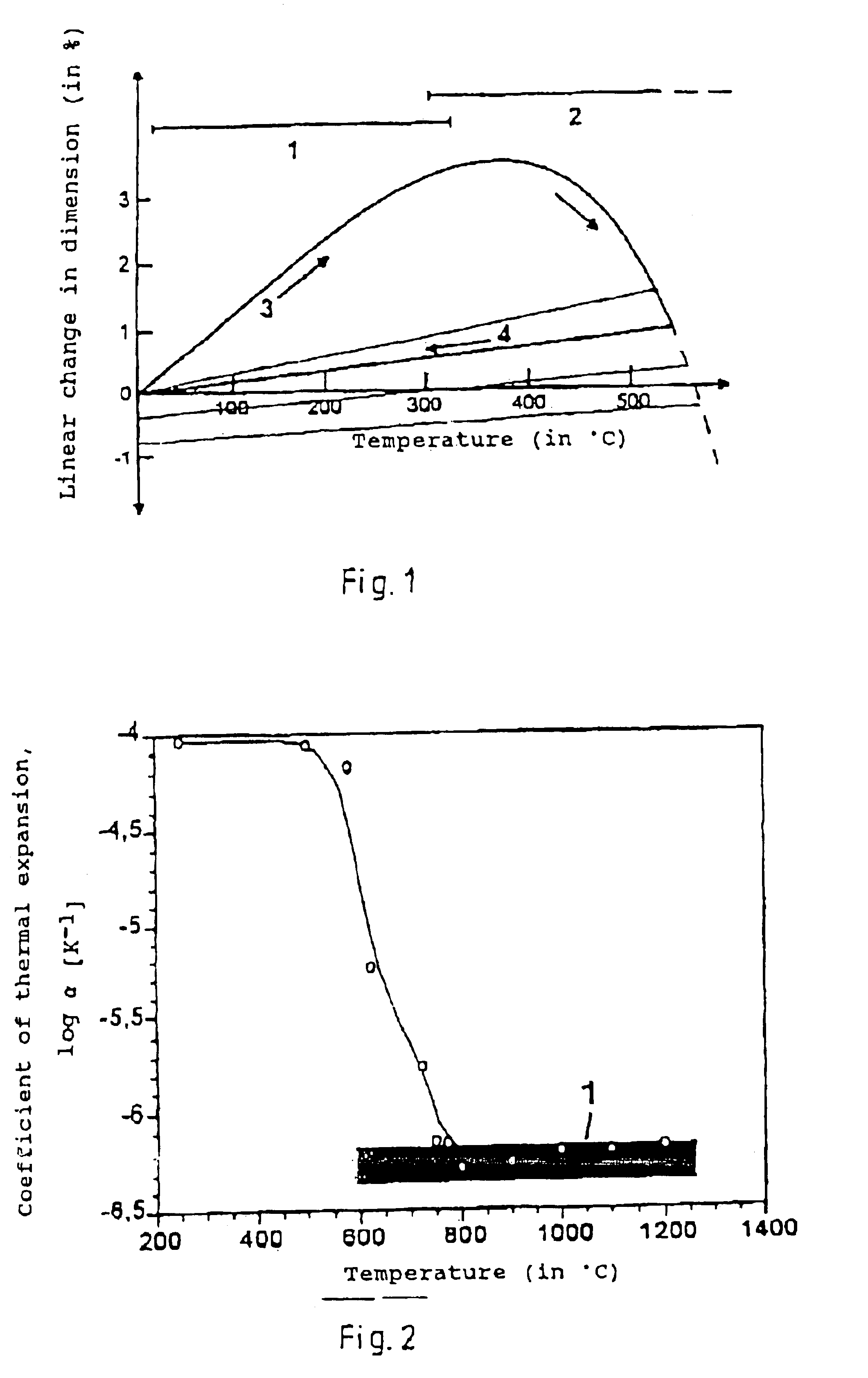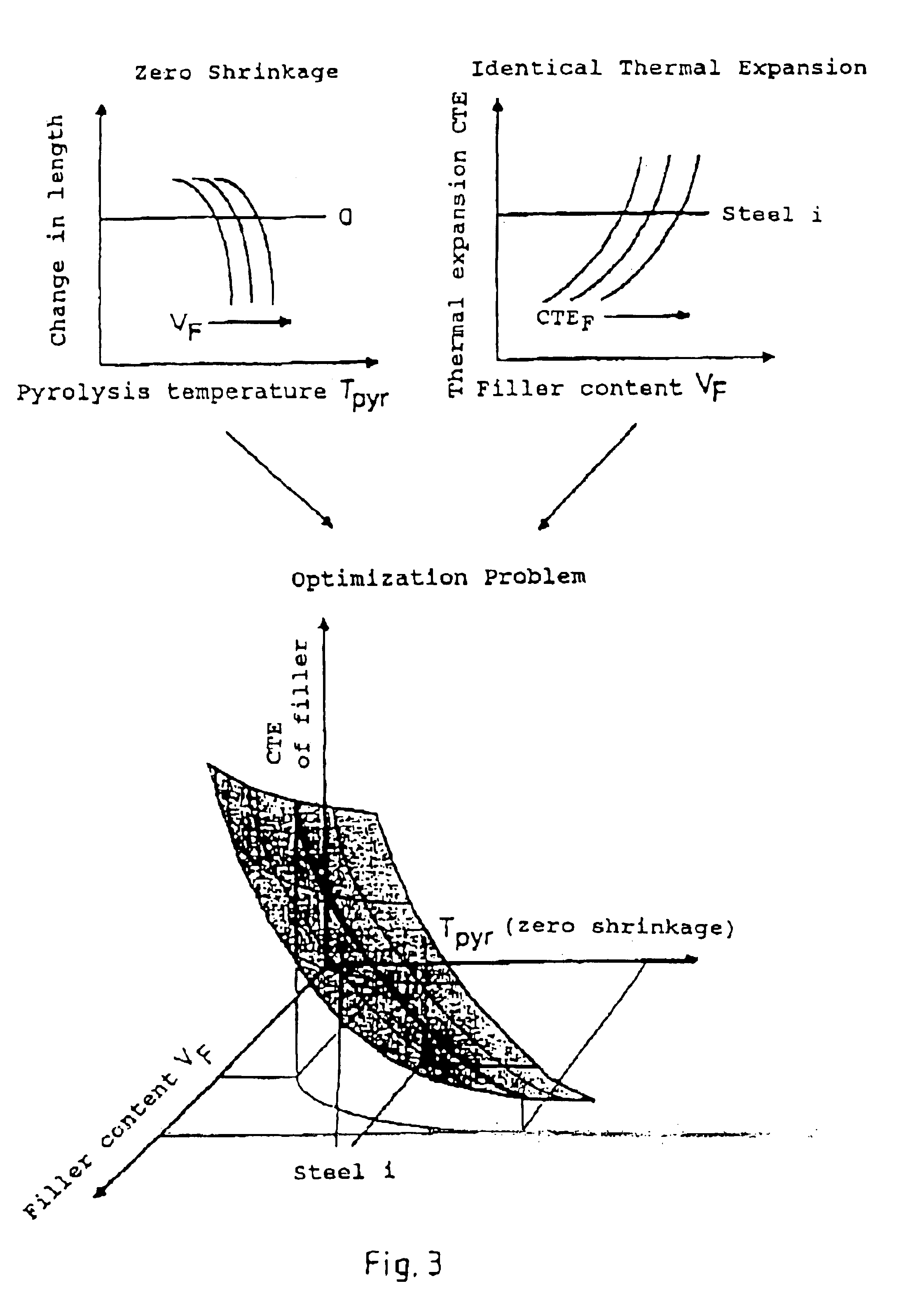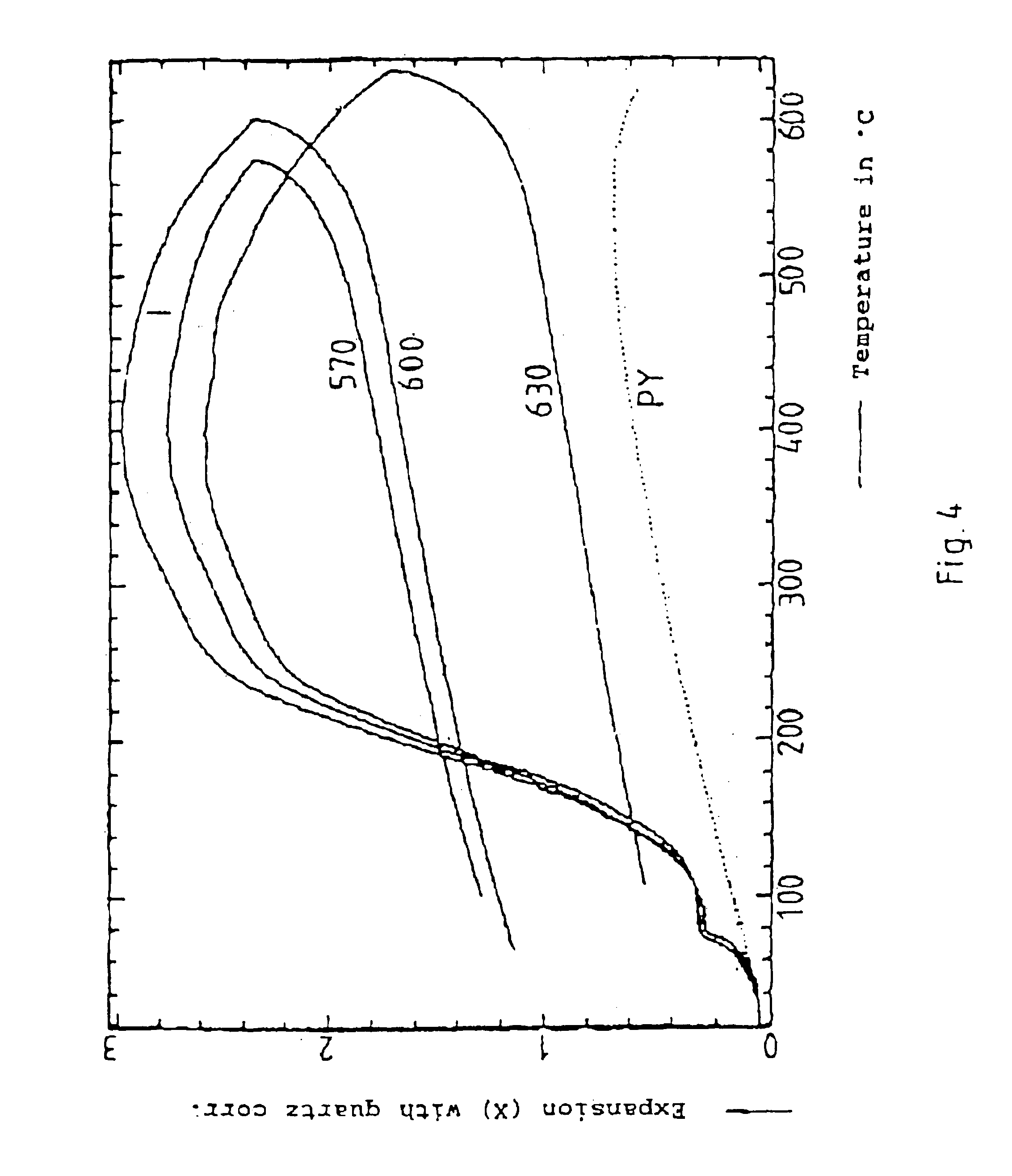Polymerceramic materials with thermal expansion characteristics similar to those of metals
a technology of polymerceramic materials and thermal expansion characteristics, applied in the field of polymerceramic materials with thermal expansion characteristics similar to those of metals, can solve the problems of reduced stability, reduced stability, and reduced dimensional accuracy, so as to reduce surface stresses, reduce cost, and reduce shrinkage
- Summary
- Abstract
- Description
- Claims
- Application Information
AI Technical Summary
Benefits of technology
Problems solved by technology
Method used
Image
Examples
exemplary embodiment 1
For producing a solid cylinder measuring 1.5.times.4 cm, which is meant to serve as a spacer, the solid polymethylsilicone resin NH 2100 (Chemische Werke Nunchritz) and a mixture of Al.sub.2 O.sub.3 (mean particle size <3 .mu.m; CTE 8.3.times.10.sup.-6 K.sup.-1) and SiO.sub.2 (mean particle size 11 .mu.m, Sikron SH 300, Quarzwerke Frechen, CTE 14.times.10.sup.-6 K.sup.-1) in a volumetric ratio of 50 volume percent polysiloxane resin, 40 volume percent Al.sub.2 O.sub.3 and 10 volume percent SiO.sub.2, in a grinding pot of 2000 ml capacity, which is filled with 0.6 particle size of ceramic grinding beads, is mixed dry for 12 hours at a rotary speed of 30 rpm. The mixed product is converted, while being stirred constantly, in a heatable agitator vessel at 140.degree. C. (melting point of NH 2100, approximately 50.degree. C.) into a low-viscosity suspension. As an aid in plasticizing, 3.5 mass % of wax is added (composition in mass %: 3.45 mass % wax, 28.85 mass % NH 2100, and 67.7 mass...
exemplary embodiment 2
For producing a molded part of a compressor, 73.8 mass % (equivalent to 47.5 volume percent) of Al.sub.2 O.sub.3 (mean particle size <15 .mu.m; CTE=8.3.times.10.sup.-6 K.sup.-1), 4.6 mass % of MgO (equivalent to 3.3 volume percent; CTE=14.times.10.sup.-6 K.sup.-1) (mean particle size <10 .mu.m), 21.2 mass % (equivalent to 49.2 volume percent) of silicone resin (NH 2100) and 0.4 mass % of aluminum acetylacetonate as a catalyst are mixed, as in exemplary embodiment 1. 520 g of the sieved (160 .mu.m mesh width) powder are placed in a preheated, graphite-coated steel pressing mold. In a heatable hydraulic press, the hot pressing is done with a movable upper die with a constant pressure of 10 MPa, while conversely the temperature is raised in 10.degree. C. increments, after a holding time of 30 minutes each, from 80.degree. to finally 130.degree. C. The pressing composition is held at this temperature for 24 hours, in order to assure its curing.
After the unmolding, internal bores are mad...
exemplary embodiment 3
To ascertain the thermal expansion behavior, small sample rods with a rectangular cross section of 5.times.5 mm.sup.2 and a length of 38 mm are produced by hot pressing in accordance with exemplary embodiment 2. The compositions of the small sample rods, examined in a dilatometer, are shown in Table 2:
In a differential dilatometer (Netzsch Geratebau), the small sample rods are measured in comparison to an Al.sub.2 O.sub.3 standard in the temperature range from room temperature to 500.degree. C. The heating rate is 5.degree. C. per minute. As Table 2 shows, it is possible, by heat treatment in the temperature range from 570to 671.degree. C., to adapt the thermal expansion of the samples investigated quite well to the values of ferritic steels (10 to 14.times.10.sup.-6 K.sup.-1) or gray cast iron (9 to 11.times.10.sup.-6 K.sup.-1). The shrinkage is less than 0.1%.
PUM
| Property | Measurement | Unit |
|---|---|---|
| shrinkage | aaaaa | aaaaa |
| temperature | aaaaa | aaaaa |
| temperature | aaaaa | aaaaa |
Abstract
Description
Claims
Application Information
 Login to View More
Login to View More - R&D
- Intellectual Property
- Life Sciences
- Materials
- Tech Scout
- Unparalleled Data Quality
- Higher Quality Content
- 60% Fewer Hallucinations
Browse by: Latest US Patents, China's latest patents, Technical Efficacy Thesaurus, Application Domain, Technology Topic, Popular Technical Reports.
© 2025 PatSnap. All rights reserved.Legal|Privacy policy|Modern Slavery Act Transparency Statement|Sitemap|About US| Contact US: help@patsnap.com



